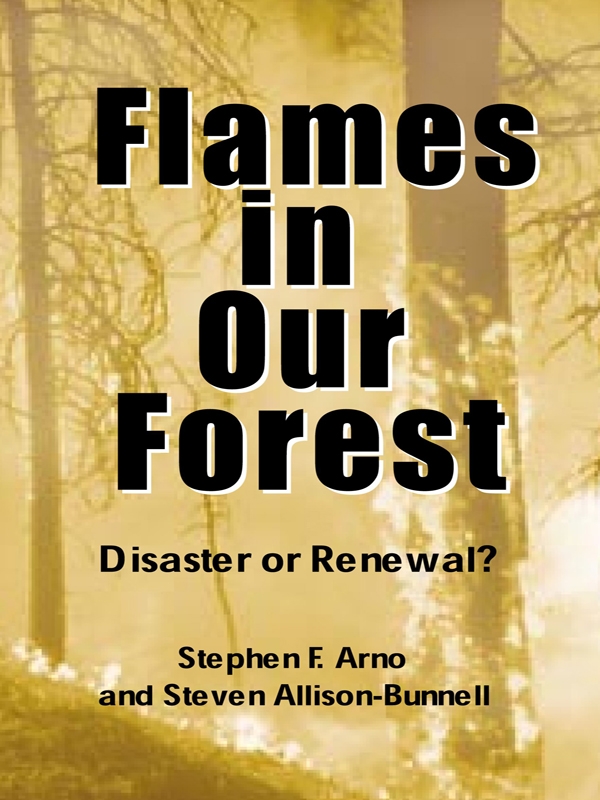Allison-Bunnell Steven - Flames in Our Forest: Disaster Or Renewal?
Here you can read online Allison-Bunnell Steven - Flames in Our Forest: Disaster Or Renewal? full text of the book (entire story) in english for free. Download pdf and epub, get meaning, cover and reviews about this ebook. City: United States, West., Washington, D.C, year: 2002, publisher: Island Press, genre: Politics. Description of the work, (preface) as well as reviews are available. Best literature library LitArk.com created for fans of good reading and offers a wide selection of genres:
Romance novel
Science fiction
Adventure
Detective
Science
History
Home and family
Prose
Art
Politics
Computer
Non-fiction
Religion
Business
Children
Humor
Choose a favorite category and find really read worthwhile books. Enjoy immersion in the world of imagination, feel the emotions of the characters or learn something new for yourself, make an fascinating discovery.
- Book:Flames in Our Forest: Disaster Or Renewal?
- Author:
- Publisher:Island Press
- Genre:
- Year:2002
- City:United States, West., Washington, D.C
- Rating:4 / 5
- Favourites:Add to favourites
- Your mark:
Flames in Our Forest: Disaster Or Renewal?: summary, description and annotation
We offer to read an annotation, description, summary or preface (depends on what the author of the book "Flames in Our Forest: Disaster Or Renewal?" wrote himself). If you haven't found the necessary information about the book — write in the comments, we will try to find it.
Shaped by fire for thousands of years, the forests of the western United States are as adapted to periodic fires as they are to the regions soils and climate. Our widespread practice of ignoring the vital role of fire is costly in both ecological and economic terms, with consequences including the decline of important fire-dependent tree and undergrowth species, increasing density and stagnation of forests, epidemics of insects and diseases, and the high potential for severe wildfires.
Flames in Our Forest explains those problems and presents viable solutions to them. It explores the underlying historical and ecological reasons for the problems associated with our attempts to exclude fire and examines how some of the benefits of natural fire can be restored Chapters consider:
- the history of American perceptions and uses of fire in the forest
- how forest fires burn
- effects of fire on the soil, water, and air
- methods for uncovering the history and effects of past fires
- prescribed fire and fuel treatments for different zones in the landscape
Flames in Our Forest presents a new picture of the role of fire in maintaining forests, describes the options available for restoring the historical effects of fires, and considers the implications of not doing so. It will help readers appreciate the importance of fire in forests and gives a nontechnical overview of the scientific knowledge and tools available for sustaining western forests by mimicking and restoring the effects of natural fire regimes.
Allison-Bunnell Steven: author's other books
Who wrote Flames in Our Forest: Disaster Or Renewal?? Find out the surname, the name of the author of the book and a list of all author's works by series.









